- 1823-1859
- Wantage/Oxford
- London to Glasgow
Early Period 1823-1859
When Elizabeth’s father, an Anglican pastor and teacher, travelled with his wife, Anne, and their first child to St. Peters Port in Guernsey in 1812, he exchanged the lively world of Oxford for life on a culturally and historically rich island in the Channel Islands.
The people of this beautiful island spoke French and English and so from the day of her birth in 1823, Elizabeth heard both languages, an experience in her formative years that was to have a profound effect on her in later life.
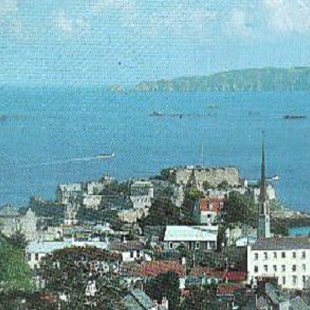
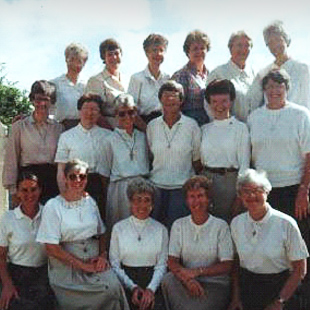
From the window of her comfortable home in Sausmarez Street, Elizabeth could look out over the town’s busy market place and the tall ships in the harbour to the sparkling sea and islands beyond. Gradually, along with her older brothers and sisters, she became familiar not only with the island’s old Churches, but also the green fields and the lovely beaches frequented by fishermen and seaweed gatherers. While her brothers attended her father’s academic establishment near the Plaiderie where lads from abroad often studied for matriculation, she delighted in the education provided for young ladies in the Allez Street seminary under the direction of her Aunt Sophie Hayes.
While Elizabeth was by nature adventurous, she often delighted in reading or in joining in family pleasures around the piano. Elizabeth’s forebears on her father’s side were highly distinguished in music and the journals of their day acclaimed the performances they organized and their articles about music. One day her knowledge of music and hymns would intertwine with her love of poetry and literature in her own journal publications.
Wantage/Oxford
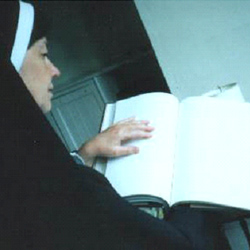
Elizabeth Hayes left Guernsey between 1843-45 by which time both her parents had died and she bravely faced an unknown future in England. There is some speculation as to how and when Elizabeth became a teacher but I lean toward the idea of her disembarking at Plymouth, travelling to Oxford and gaining initial employment there. However it also feasible that ‘literary London’ may have attracted her initially. Sound data exists to prove that during 1850 she was in Wantage, just outside of Oxford, where she was at first employed to supervise a shelter for unmarried mothers and former prostitutes. Within a month however, she was leader of the parish school which had been originally established by Elizabeth Lockhart at the request of the vicar, Rev. William Butler. As lay leader and later as a vowed religious leader, Elizabeth Hayes ensured that this establishment, which continues to this day, plus other educational services grew from strength to strength.
I find the most delightful story from this period in Elizabeth’s life contained in the ‘Memories’ of a later companion, Angelica (Sr M. of the Angels) Chaffee. She recounted how Elizabeth could handle a horse and buggy and this enabled her to make visits in the countryside. At times, Elizabeth organized for her youthful female students a day-trip to Oxford and we know that she liked to visit her friend, Marian Rebecca Hughes, living in St John Street. History records that Marian was the first Anglican woman in England to take religious vows. Today housed in Oxford’s Pusey College are the archival reminders of Mother Marian and her sisters who served Oxford well for many years, even risking their lives for others during epidemics. During these years in England, Hayes knew many followers of the Oxford Movement, including Anglican sisters in new religious communities, and was personally known to its leaders. Hayes had always loved reading; by 1856 she had read many spiritual and theological publications and journals, including the latest translations of traditional Catholic works e.g. the writings of St. Teresa of Avila. Now she was ready to move on.
London – Farm Street, Greenwich, Bayswater; Glasgow
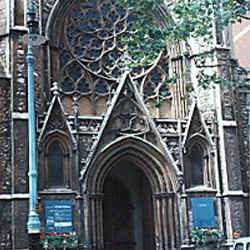
The Jesuit’s Church in Farm Street in the Mayfair area of London was the popular place where new members joined the Catholic Church. It was here in 1856 that Elizabeth publicly took a new direction in her faith journey and in the same year she joined Mother Elizabeth Lockhart’s Catholic Greenwich community. This group was composed of vowed women who had made a similar religious decision.
The next year Lockhart’s community moved to Bayswater at the request of the parish priest, Dr. Edward (later Cardinal) Manning, in order to look after the school and to help in parish ministries. Elizabeth Lockhart’s half-brother, William, was an outstanding Rosminian priest and originally the sisters were guided also by the Rosminian rule.
Later, with encouragement from Manning, the sisters desired to follow the Franciscan Rule of life as exemplified by a growing community of Franciscan Sisters in Glasgow.
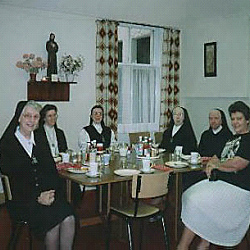
Elizabeth received the Franciscan habit in Bayswater, London. Then having accepted an offer to complete her novitiate, training in the Franciscan way of life, with the longer established Glasgow Franciscans, she left with a small group composed of sisters returning to their motherhouse and other novices.
Elizabeth knew that the Glasgow Franciscan Sisters of the Immaculate Conception, whose roots were in Tourcoing, France, had established a mission in Jamaica in the West Indies. She wanted desperately to be a missionary in a foreign country. The bishop of Glasgow, Bishop Smith, encouraged her to hope that Jamaica would be her future place of mission and ministry. Again Hayes found herself in the teaching ministry, not only during the day but also helping poor young Glasgow women at night. Glasgow’s weather was not kind to her especially when she walked home with the sisters after evening classes. This challenged her health at the age of 36 but with characteristic determination she was ready in December 1859 to travel to her next mission.
